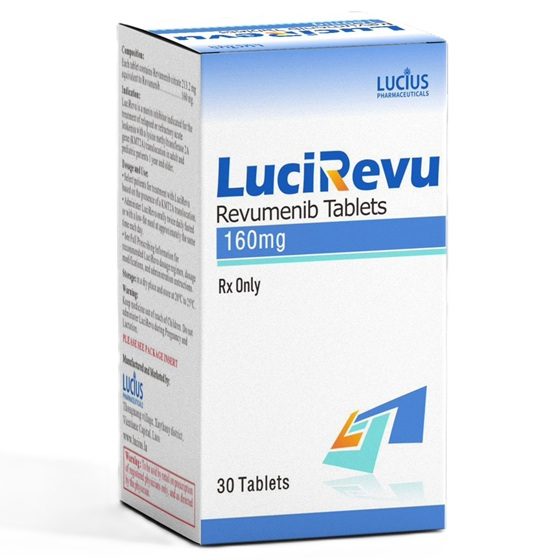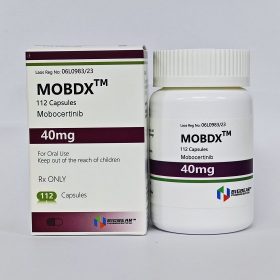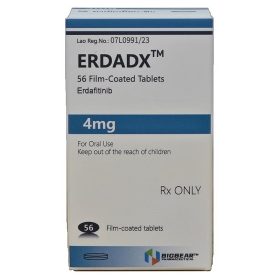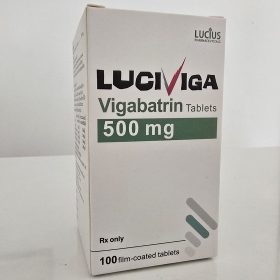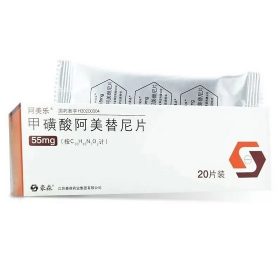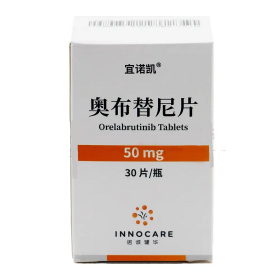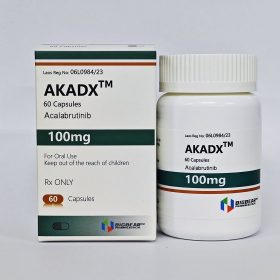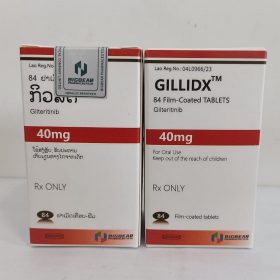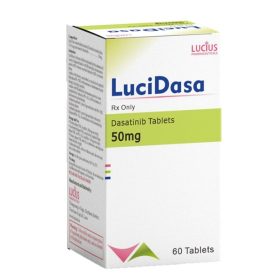- Details
- Description
-
Packaging Size30t/Bottle/Box
-
Strength160mg
-
CompositonRevumenib
-
TreatmentAcute leukemia with lysine methyltransferase 2A gene translocation (KMT2A)
-
FormTablet
-
BrandLuciRevu
-
Quantity Unit160mg*30t/Box
-
ManufacturerLucius Pharmaceuticals (Lao) Co.,Ltd
About Revumenib
Revumenib is an anti-cancer medication used for the treatment of acute leukemias harboring lysine methyltransferase 2A gene (KMT2A) rearrangements.It is designed to disrupt the interaction between menin and KMT2A (also known as MLL), which plays a role in the pathogenesis of these leukemias. It is taken by mouth.
Acute Leukemia
Indications
- Indicated for relapsed or refractory acute leukemia that has a lysine methyltransferase 2A gene (KMT2A) translocation
- Indicated for relapsed or refractory acute myeloid leukemia with a susceptible nucleophosmin 1 (NPM1) mutation who have no satisfactory alternative treatment options
Dosing
- ≥40 kg: 270 mg PO BID
- <40 kg: 160 mg/m2 PO BID; refer to body surface area (BSA) dosing in Pediatric Dosing
- Continue until disease progression or unacceptable toxicity
- Treat for at least 6 months to allow time for clinical response in patients without disease progression or unacceptable toxicity
Dosage Modifications
Recommended dosage reductions
- ≥40 kg: Decrease to 160 mg PO BID
- <40 kg: Decrease to 95 mg/m2 PO BID; refer to BSA dosing in Pediatric Dosing, Dosage Modifications
Differentiation syndrome
-
If differentiation syndrome suspected
- Administer systemic corticosteroids (eg, dexamethasone 10 mg IV q12h for ≥40 kg or 0.25 mg/kg IV q12h for <40 kg) for at least 3 days and until symptoms resolve
- Restart corticosteroid if syndrome recurs after taper
- Institute supportive care and hemodynamic monitoring
-
Hold therapy
- If severe signs and/or symptoms persist >48 hr after starting systemic corticosteroids
- For life-threatening symptoms (eg, pulmonary symptoms requiring ventilator support)
- Resume at same dose when signs and symptoms improve to Grade ≤1
Noninfectious leukocytosis
- Start hydroxyurea in patients with elevated or rapidly rising leukocyte count
- Add leukapheresis if clinically indicated
- Taper hydroxyurea only after leukocytosis improves or resolves
QT prolongation
-
QTc interval >480-500 msec
- Hold and evaluate electrolyte levels
- Correct hypokalemia and hypomagnesemia as required
- Resume at same dose level when QTc interval ≤480 msec
-
Grade 3 QTc interval (>500 msec)
- Hold and evaluate electrolyte levels
- Correct hypokalemia and hypomagnesemia as required
- Resume at reduced dose level when QTc interval ≤480 msec
-
Grade 4 QTc interval (signs/symptoms of life-threatening arrhythmia)
- Life-threatening arrhythmias may include torsade de pointes or polymorphic ventricular tachycardia
- Permanently discontinue
Low electrolytes
-
Potassium 3.6-3.9 mEq/L and/or magnesium 1.7-1.9 mg/dL
- Supplement potassium and/or magnesium and continue therapy
-
Potassium ≤3.5 mEq/L and/or magnesium ≤1.6 mg/dL
- Supplement potassium and/or magnesium; recheck levels within 24 hr
- If potassium >3.5 mEq/L and/or magnesium is >1.6 mg/dL, continue therapy
- If potassium <3.5 mEq/L and/or magnesium is <1.6 mg/dL, hold and continue supplementation; resume at same dose level when low electrolytes are corrected
Grade ≥3 allergic reactions
- Permanently discontinue
Grade 4 neutropenia or thrombocytopenia
- Hold until recovery to Grade ≤2 or baseline and resume at same dose level
- If Grade 4 toxicity recurs (without attributable cause), hold until recovery to Grade ≤3 and resume at reduced dose level
Other Grade ≥3 nonhematologic adverse reactions
- Hold until recovery to Grade 1 or baseline
-
If toxicity recovers ≤7 days
- Resume at same dose level
- If same Grade ≥3 toxicity recurs, hold until recovery to Grade 1 or baseline and resume at reduced dose level
-
If toxicity recovers >7 days
- Resume at reduced dose level
- Discontinue if same Grade ≥3 toxicity recurs
Renal impairment
- Mild to moderate (CrCl 30-89 mL/min): No clinically significant pharmacokinetic (PK) differences observed compared with normal renal function
- Severe (<30 mL/min) including end-stage renal disease (<15 mL/min): Not studied
Hepatic impairment
- Mild (total bilirubin [TB] ≤ULN and AST >ULN or TB >1-1.5x ULN and any AST) or moderate (TB >1.5-3x ULN and any AST): No clinically significant PK differences observed compared with normal hepatic function
- Severe (TB >3x ULN and any AST): Not studied
Strong CYP3A4 inhibitors
-
Initial dosage
- ≥40 kg: 160 mg PO BID
- <40 kg: 95 mg/m2 PO BID; refer to BSA dosing in Pediatric Dosing
-
Recommended dosage adjustments
- ≥40 kg: 110 mg PO BID
- <40 kg: 65 mg/m2 PO BID; refer to BSA dosing in Pediatric Dosing, Dosage Modifications
-
Strong CYP3A4 inhibitor discontinued
- Wait at least 5 half-lives of strong CYP3A4 inhibitor and then increase revumenib to recommended dosage

